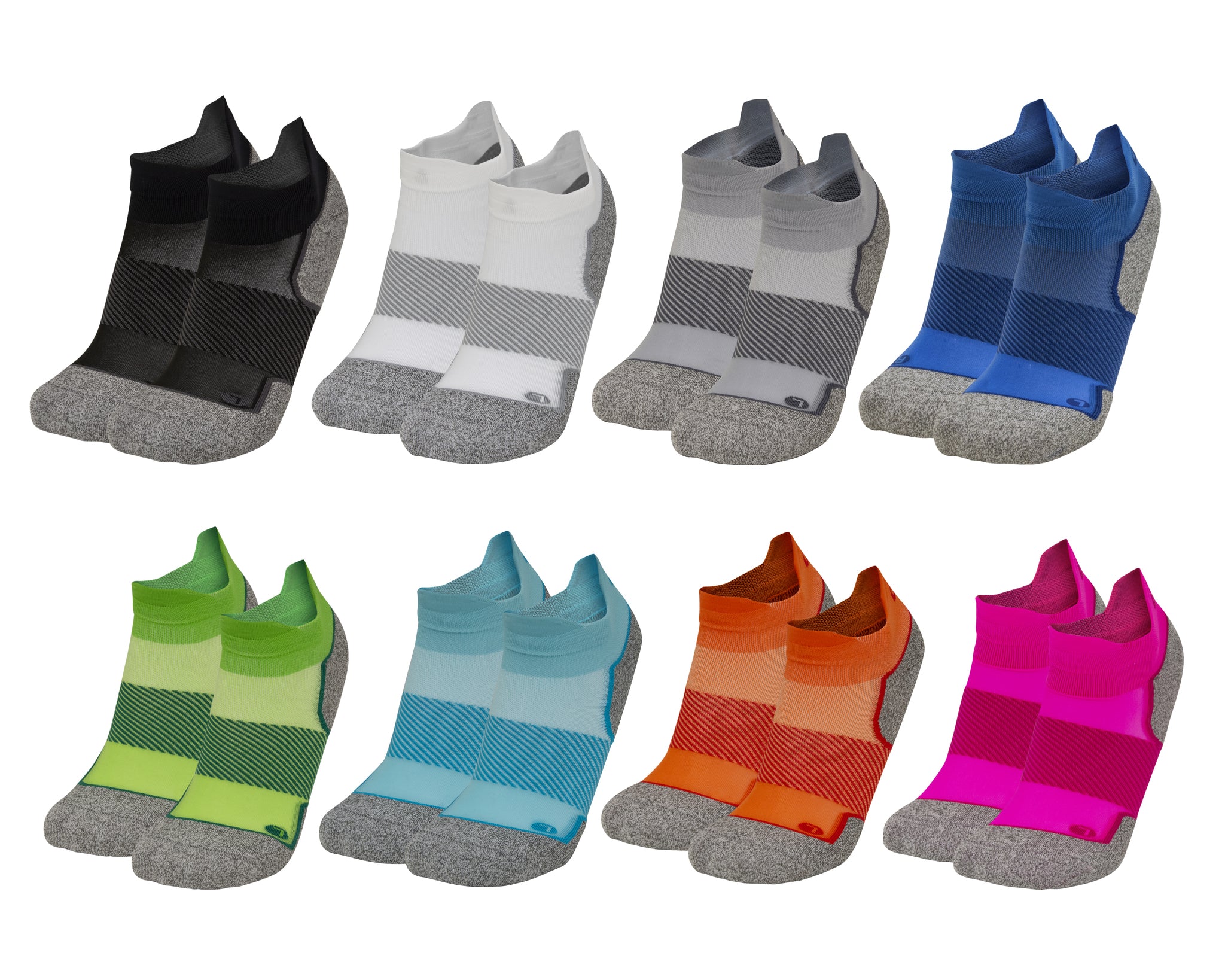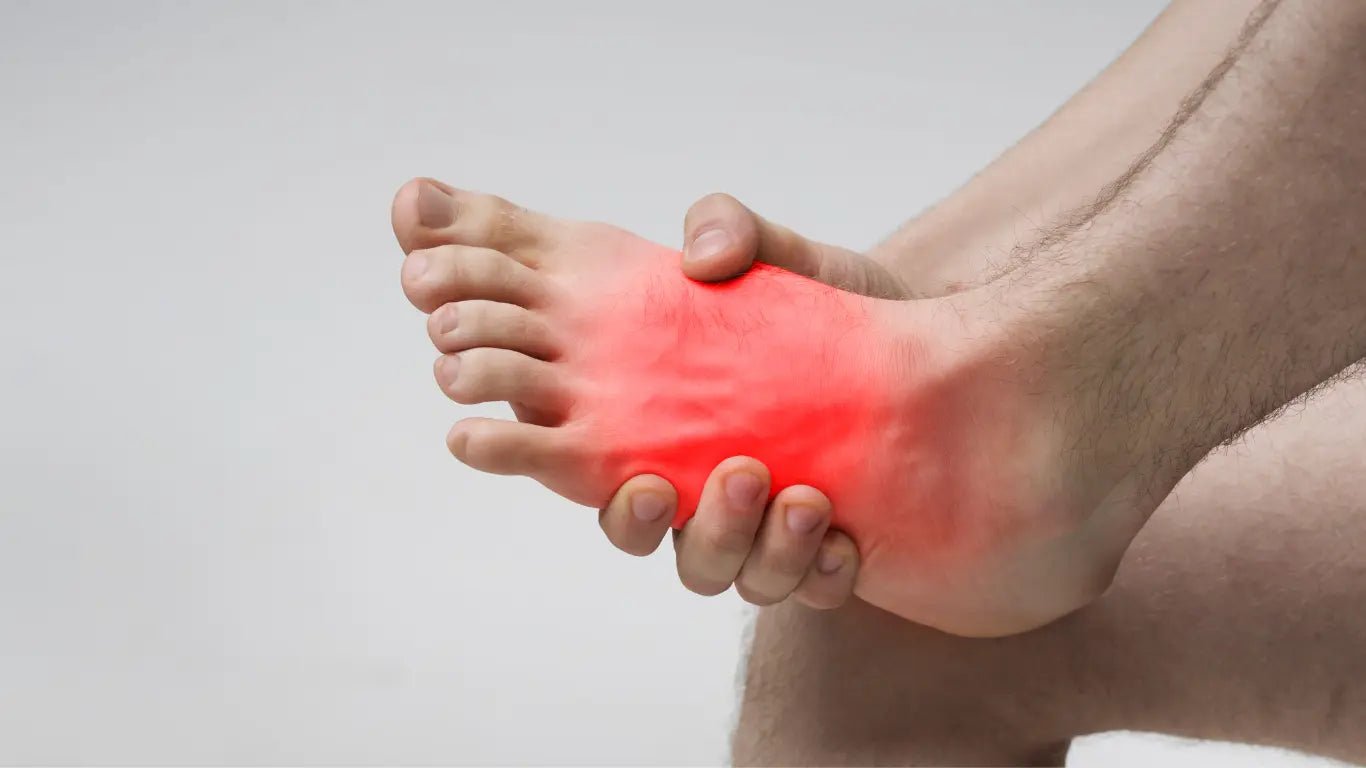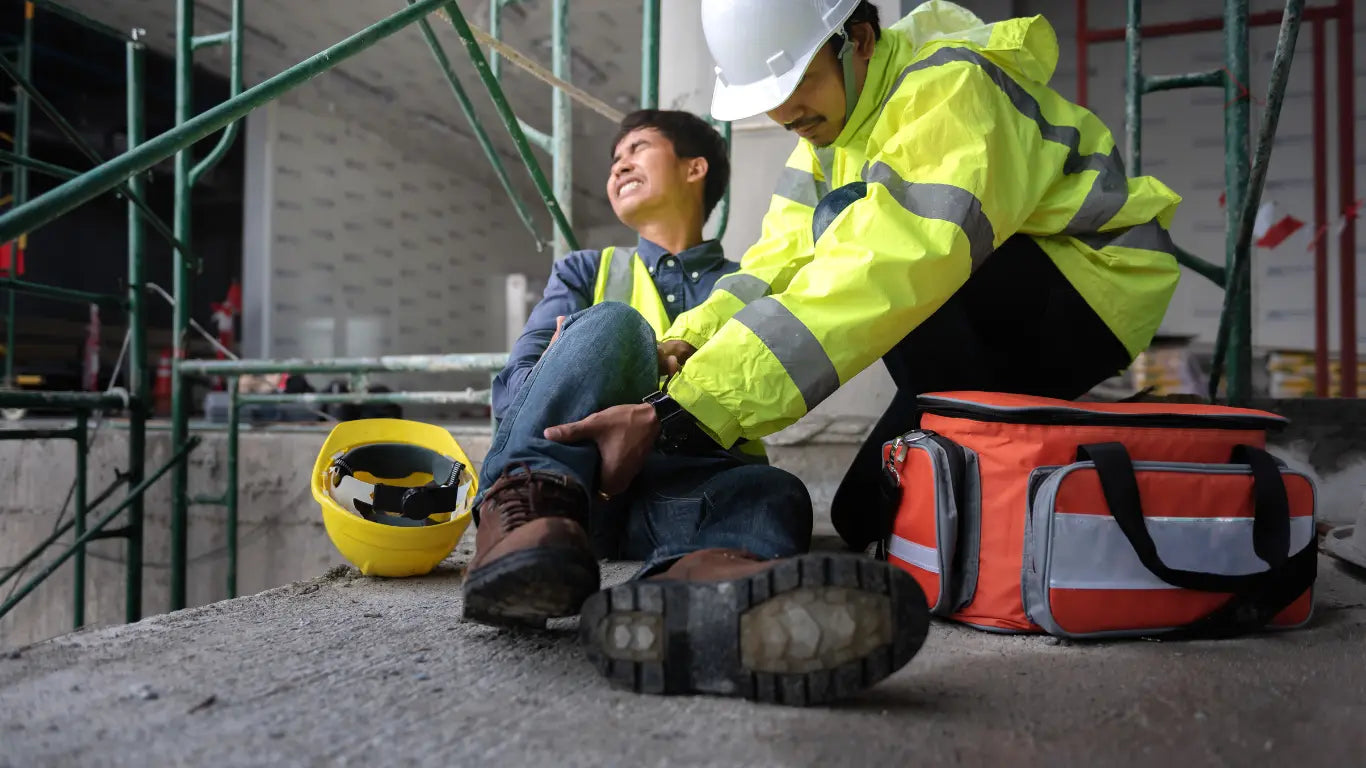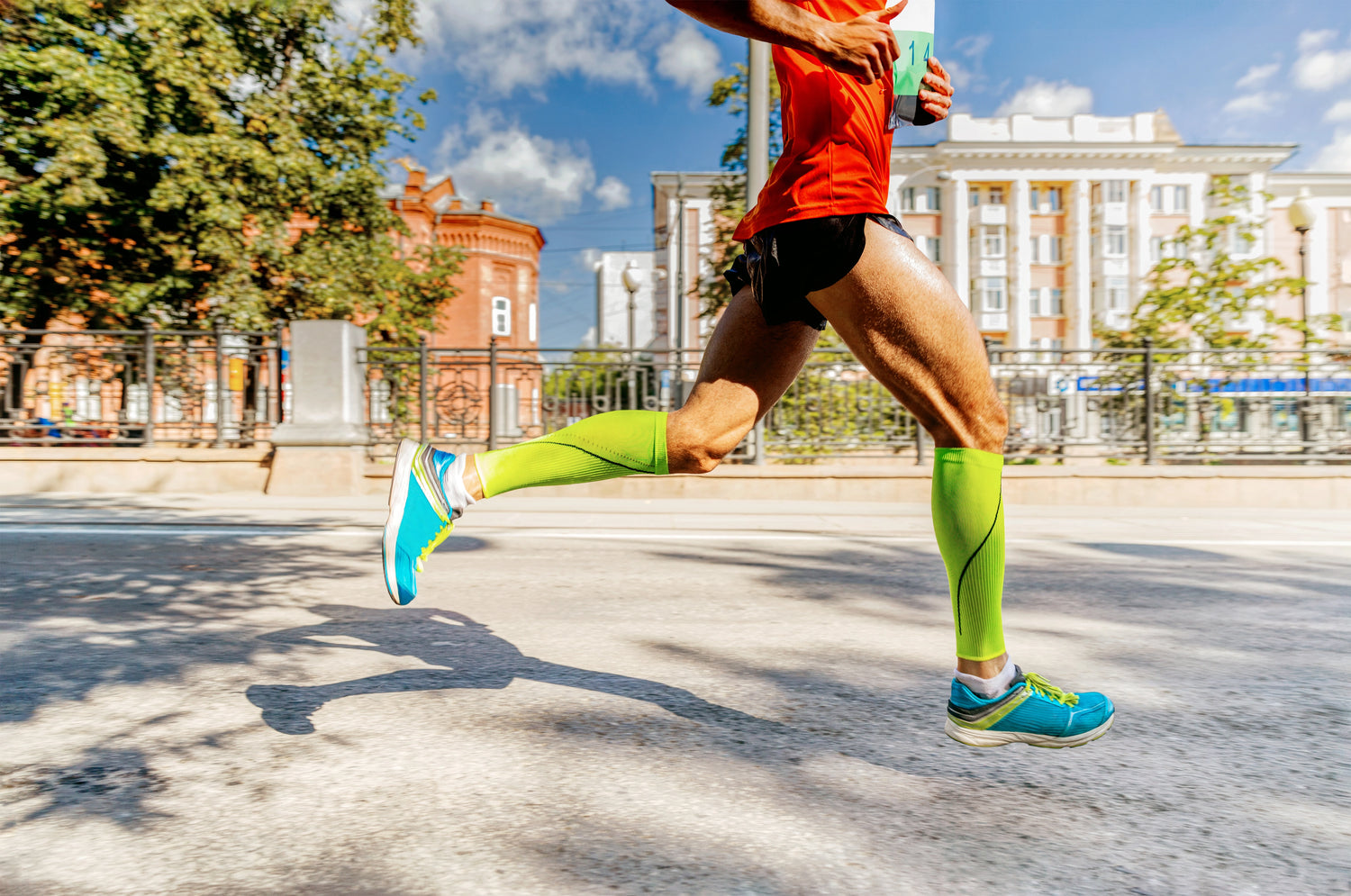What Is A Quality Sock – How To Choose The Right Sock For you
Socks are an important consideration for all of us as they are the first interface with your feet! They are important in protecting our feet as well as should be keeping them cool and dry. Hot, wet feet inside a shoe can cause a multitude of issues including friction, blisters, fungus, bacteria, and itchy/hot feet. In this post I will go over the history of socks and then home in on the major characteristics of athletic/lifestyle/compression socks on the market as well as important components of quality socks.
History of Socks – Where did they come from?
Socks are a clothing accessory worn on the feet to help protect them while wearing footwear. Several common types of socks on the market today are ankle/no-show, ¼ crew, crew and over the calf. Socks existed all the way back to ancient times. The Ancient Greeks, in the 8th Century BC, wore socks called “Piloi” which were made of animal hair. Leather was also a material used. Ancient Romans, around the 2nd Century AD, began sewing materials together to make some of the first fitted socks.
Now let us fast forward to 1589. This is when the first sock knitting machine was invented and allowed for 6x increased production speed vs. hand knitters. But until the 1800’s, hand knitting was still the predominate form of producing socks, The next big innovation in sock production was material type. Socks were predominately made from cotton, silk, and wool and then in 1938, Nylon was introduced. Nylon is the blending of two or more different yarns to produce socks and this process continues today. Nowadays socks are mass produced very quickly and the options are immeasurable.
Major Types of socks on the Market Today:
Socks by 4 most common lengths:
- No-show: Cover the entire foot but are mostly invisible when wearing shoes. Great for low cut or slip-on shoes
- ¼ crew: Longer than no-show’s, they protect the ankle bones and lower shin anteriorly and the Achilles tendon posteriorly. Great for running casual shoes
- Crew: Extend further up to the mid-calf area of the lower leg. Great for high top sneakers, boots and even running shoes if that is your style
- Over the calf: These extend up through the lower leg up to the knee. You will find these mainly in compression socks in the athletic world
Socks by most common Material:
- Cotton: Cotton is a lightweight moisture absorbing material. It is commonly used in socks because it is cheaper than other materials. The downside of cotton is it traps in the heat and moisture and is not very elastic, so they lose their shape over time.
- Polyester: Polyester is another cost-effective synthetic material used for socks. It does dry faster than cotton and is NOT a moisture absorbing material, but it is not breathable, which increases the chances of fungal and bacterial conditions including foot odor.
- Nylon: Nylon is very strong, versatile and hard-wearing. It can be used to make thin or thick socks and is very elastic. Nylon is typically blended with other materials to add stretch and durability.
- Merino Wool: This is a fantastic material but costs more than other materials. It is moisture wicking, cooling, and odor resistant. This material has a natural elasticity that helps keep its shape and can be made into both thin and thick sock options.
- Two Other Materials: Spandex and Bamboo are two other materials used in making socks as they are durable materials and have other properties that benefit the end user.
Socks by most common Function:
-
Athletic Socks: Specificity or Socks with a Purpose are designed for different activities
- Running Socks: Designed to reduce blisters, wick moisture, keep your feet cool & dry and increase comfort. They come in various types, materials and thicknesses. Check out the Thin Air Performance Sock. It is really the top running sock on the market and a favorite for amateurs and professionals alike.
- Hiking Socks: Designed with many of the same key benefits of running socks but are more cushioned for comfort. A great hiking sock that will keep you on the trails for hours is the Wellness Performance Sock by OS1st.
- Sport Specific Socks: Again, by design their function is to help keep your feet cool & dry, reduce friction, prevent blisters and increase comfort but typically differ in type, materials, etc. based on the sport or activity. If you’re into Pickleball, for example, you have to check out The Pickleball Sock – It’s the official sock for USA Pickleball.
- Compression Socks: Designed to, via compressive pressure, increase blood flow to the lower leg and foot and reduce pain & swelling. Graduated compression is the way to go and is measured in mmHg. There are multiple graduated compression levels and you can learn more by clicking here: Compression Levels 101. The best compression sock on the market in my opinion is the Compression Bracing Sock by OS1st. They are a company that cares and it shows as they spend thousands of dollars yearly to have their manufacturing facility approved by the FDA so you can trust you’re receiving the levels of compression advertised.
- Dress Socks: Designed to accompany wardrobes and dress shoes of varying styles, colors, etc. They are typically made of very thin materials, so they will fit in tight fitting, low volume shoes
- Travel Socks: These are graduated compression socks designed with the air traveler in mind. Being seated in a confined space for prolonged periods of time can diminish blood circulation causing uncomfortable pressure and swelling in the legs, and even blood clots. The Travel Sock by Os1st is a great option for those days in the air.
- Work Socks: Socks for work are generally crew length, have some compression built in as well as additional cushioning, and are very durable. They also allow for breathing and moisture wicking. Types of work socks vary depending on the working conditions present.
-
Multi-Purpose Functionality: Now here’s where it gets interesting for you. You do not need to be an athlete, travel frequently, or need compression socks for medical reasons. Most of the socks I offer have multiple uses. Here are just a few socks that are multi-purpose based on user preference:
- Thin Air Performance Sock: Great for those who prefer a thin sock or a lower volume shoe. Think of nursing as an example. Nurses often wear a clog type shoe like Dansko, and they fit in them perfectly as well as wick the moisture and keep their feet cool & dry on long shifts
- Travel Sock: You do not have to travel to benefit from this sock. Those wanting to benefit from graduate compression at a 15-20 mmHg compression level vs. 20-30 mmHg turn to this sock. It is a little easier to adjust to for first time wearers of compression.
- Wellness Performance Sock: I could go on and on about this sock but it is great for walking, hiking, at work, at play, in the gym. You get the point.
Important components of a quality sock:
- Light weight
- Anti-bacterial
- Breathable & moisture wicking to keep your feet cool and dry and lesson the chances of moisture, bacteria and fungus build up – and odor.
- Anatomical: (right & left) and seamless to provide the perfect fit and reduce friction points
- Cushioned in high friction/pressure areas
- Allow for natural foot splay when on your feet
- Deeper heel cup to avoid sock slippage, especially in the no-show sock category
In conclusion, I cannot stress enough that socks really do matter. They are the first interface with your feet and are important. The goal of socks is to protect your feet and keep them cool and dry. If you are interested in learning more about quality socks and how they can benefit you, visit my online shop. And if you have any specific questions about socks, please do not hesitate to reach out, I am here for you and your feet.
Bryan Acheson, CPed | (804) 821-1321 | Bryan@solelytics.com
Serving Colonial Heights, Chester, Chesterfield, Midlothian, Hopewell, Dinwiddie, Petersburg, and the Richmond Metro area.
***These areas are not inclusive, and other service areas may be available upon request***
--I am a Board Certified Pedorthist and owner of Solelytics. I am not a medical doctor or Podiatrist. I have been trained in certified in foot assessments, gait analysis, orthotic fabrication and fitting and footwear fitting. As a Certified Pedorthist I cannot diagnose foot conditions nor prescribe remedies for foot conditions. If you are experiencing a severe foot condition or one that is chronic and will not remedy itself after over-the-counter intervention, I always recommend you make an appointment with a Podiatrist or medical professional--





